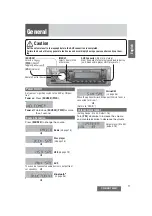
Glossary
©
National Instruments Corporation
G-5
common-mode signal
1. Any voltage present at the instrumentation amplifier inputs with
respect to amplifier ground.
2. The signal, relative to the instrument chassis or computer’s ground, of
the signals from a differential input. This is often a noise signal, such
as 50 or 60 Hz hum.
connector
1. A device that provides electrical connection.
2. A fixture (either male or female) attached to a cable or chassis for
quickly making and breaking one or more circuits. A symbol that
connects points on a flowchart.
convert rate
Reciprocal of the interchannel delay.
count
The number of events, such as zero crossings, pulses, or cycles.
counter
1. Software. A memory location used to store a count of certain
occurrences.
2. Hardware. A circuit that counts events. When it refers to an instrument,
it refers to a frequency counter.
counter/timer
A circuit that counts external pulses or clock pulses (timing).
D
D GND
Digital ground signal.
D-SUB connector
A serial connector.
DAC
Digital-to-Analog Converter—An electronic device, often an integrated
circuit, that converts a digital number into a corresponding analog voltage
or current.
In the instrumentation world, DACs can be used to generate arbitrary
waveform shapes, defined by the software algorithm that computes the
digital data pattern, which is fed to the DAC.
















































